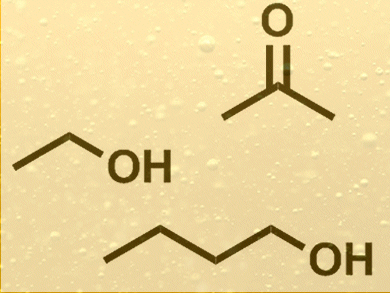A major part of edible oil is subjected to bleaching procedures, primarily with minerals used as adsorbers to remove undesired impurities. After separation of bleached oil and minerals, 20–40 % of the mineral’s dry mass is made up of adsorbed oil. With regards to recycling, the oil from this so-called spent bleaching earth (SBE) can be regained by organic solvent extraction or it can be used as an additive in animal feed.
Roland Ulber, University of Kaiserslautern, Germany, and colleagues have developed a biotechnological route for the reutilization of the by-product SBE for the microbial production of acetone, butanol, and ethanol (ABE). The application of lipolytic clostridia strains to the SBE first leads to the hydrolysis of the oil to fatty acids and glycerol. Subsequent fermentation gives ABE. As an alternative route Candida rugosa and enzymatic hydrolysis were used for the hydrolysis step.
The glycerol produced by either route was only converted into ABE with a yield of 0.15 g/g glycerol compared to 0.3 g/g found with a standard glycerol medium. The inhibitory effect is most likely due to fatty acids. This approach gives proof-of-principle for a low-cost recycling method for SBE by generating high-value solutes ABE.
- Recycling of spent oil bleaching earth as source of glycerol for the anaerobic production of acetone, butanol, and ethanol with Clostridium diolis and lipolytic Clostridium lundense,
Nils Tippkötter, Steffen Wollny, Kirstin Suck, Ulrich Sohling, Friedrich Ruf, Roland Ulber,
Eng. Life Sci. 2014.
DOI: 10.1002/elsc.201300113




Good idea! For anyone interested in the WW1 acetone shortage in the UK and how it was fixed with bacteria listen here: http://www.rsc.org/chemistryworld/podcast/CIIEcompounds/transcripts/acetone.asp or read a more elaborate story in “The Last Alchemist in Paris” http://ukcatalogue.oup.com/product/9780199661091.do Can’t help citing myself: “… we could perhaps do worse than dust off the old methods of Weizmann …”